So you want to… variably drill seed
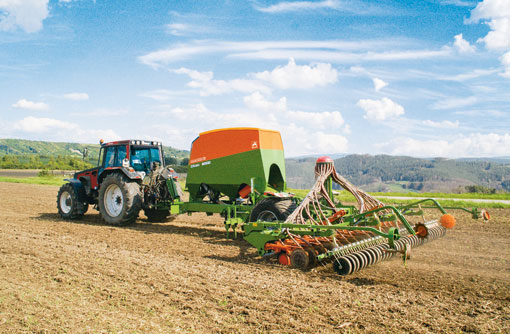
If it makes sense to apply nitrogen and P and K at rates tuned to compensate for variability in soil reserves, then it also makes sense to adjust seed rate within fields to counter factors that affect plant population.
That is the conclusion reached by an increasing number of growers when looking to improve winter cereal crop yields now that GPS-guided variable-rate technology has become commonplace rather than a slightly scary novelty.
“Farmers have used variable application of nitrogen, phosphate and potash for years now,” says Simon Parrington of SOYL Precision Farming. “As they became confident this technology works, variable-rate sowing was the next obvious option; now, though, it is often the first option before using variable-rate nitrogen.”
Among customers using the Berkshire company’s SOYLseed service, it is evident that fine-tuning winter wheat and winter barley seed rates within fields can have a significant impact – 20-50% less yield variation has been seen on harvest yield maps in some cases.
“It’s not appropriate in all circumstances,” Mr Parrington adds. “If there’s little soil type variation within a field and there are no other factors causing variable crop establishment, then you might as well use a blanket seed rate.
“But where soil type varies significantly within a field and poorer establishment is seen on heavier soils, large areas suffer from grazing damage or blackgrass poses significant competition, then variable-rate sowing can help even things up,” he says.
That in itself should help lift the yield of poorer-performing areas but added value comes from optimising pesticide and other treatments across a crop reaching key growth stages more evenly.
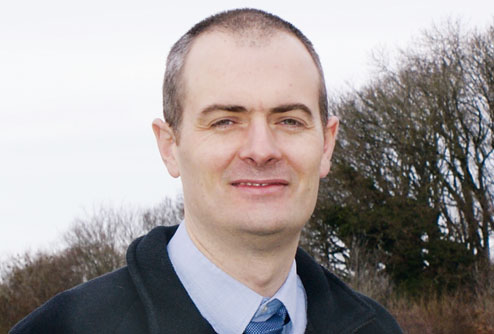
Simon Parrington of SOYL Precision Farming.
“It can also improve the efficiency of variable-rate nitrogen,” adds Mr Parrington: “By evening out plant population, remote sensing imagery provides a better reflection of nitrogen uptake by the crop.”
Unless soil type variation is clear cut and well defined by past experience, a soil survey is the first step towards using variable sowing technology, notes precision farming specialist Will Walters at The Courtyard Partnership.
“First, we’ll provide a consultation to explain common approaches to varying seed rate by soil zone,” he points out. “The zoning process itself, which in our case involves surveying between 10 and 15 different aspects, is a one-off requirement to classify soil types and their boundaries in enough detail to allocate different seed rates.”
Factors such as soil texture, organic matter and stone content are included, and seed-bed quality can be taken into account when preparing the seed rate plan.
The objective, he emphasises, is not necessarily to use less or more seed in total but rather to optimise the sowing density in relation to germination, establishment and survival expectations within distinct areas of each field.
The outcome should be a more regular crop come spring with no thin or bare patches that growers try to fix with nitrogen; instead, they can focus on using flat or variable rate N to push yields throughout the field.
“A feature of our software is that small areas within the soil zones can be allocated a different seed rate,” adds Mr Walters. “That way, we can compensate for parts of the field overhung with trees or that tend to lie wet later into the spring, as well as areas where crops are eaten off by rabbits or game birds.”
Similar flexibility is available at sowing: while some variable rate application plans cannot be overridden in the field, those produced in Courtyard’s online toolbox can be adjusted by the drill operator on the day using the regular plus or minus button. That way, any unexpected change in seedbed quality can be compensated.
Winter wheat and barley are the main beneficiaries of this technique, but Mr Walters is investigating with customers the potential for shifting seed rate 9% up and down from a standard rate when drilling or broadcasting winter oilseed rape, and when drilling spring barley, including a crop undersown with grass.
As for the hardware required, any grower buying a new drill in the past four or five years will likely have a machine readily adapted to variable-rate sowing. The essential requirements are an electric drive to the metering rollers and an electronic controller in the tractor cab that can “talk” to a GPS receiver and data processor.
The latter device is loaded with a digital map that determines which seed rates are applied where; this information is passed to the drill controller, which adjusts the metering roller speed accordingly.
“Compatibility between controllers and GPS devices from leading makes is pretty much universal,” says Mr Walters. “For example, connecting a Väderstad or Horsch drill controller to a John Deere Greenstar GPS terminal shouldn’t present any problems.”
Things are further simplified with the installation of GPS receivers into Isobus-compliant implement control terminals, which makes them truly universal devices. They can then handle steering guidance, sprayer and spreader section control and remote-camera video feed, in addition to variable-rate sowing.
Kverneland Group’s latest iMatch Tellus has a GPS receiver and software functions waiting to be activated. Its section control facility, which is currently limited to sprayers and spreaders, will soon be available on Kverneland Accord drills – so growers will then not only be able to use different seed rates but also minimise sowing overlaps.
Growers with older drills are also catered for with the introduction by RDS Technology of a conversion kit to replace land-wheel metering roller drive with electric motor drive.
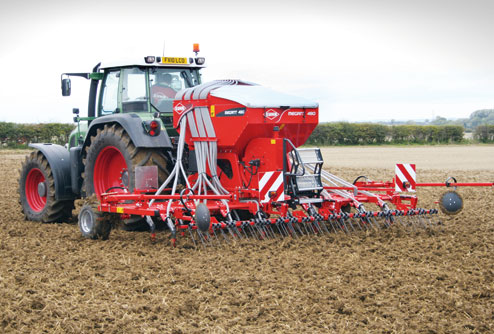
Variable rate sowing is used almost exclusively for winter wheat and barley, but growers are beginning to dabble with the technique for winter oilseed rape now that broadcasters such as the Techneat TerraCast.
“There’s been very strong demand for it,” says Peter Nelson, technical director. “It seems there are plenty of growers wanting to use variable rate sowing without going to the expense of buying a new drill.”
The conversion package, priced from £3,000 to £4,500 plus installation, is available for pneumatic drills with one or two Accord-style metering units, including combined seed and fertiliser drills, and is based on the Artemis system, which is a popular choice as original equipment for a number of European manufacturers, including Claydon, Gaspardo, Mzuri, Sulky, Sumo and Weaving.
The PS8000i instrument, which is part of the package, uses CAN-BUS to communicate with a dedicated motor-control module on the drill. This dedicated module ensures fast response from the electric motor for accurate proportional adjustment to changes in forward speed.
Either one or two electric motors are included as necessary, along with wiring harnesses, sensors and so on.
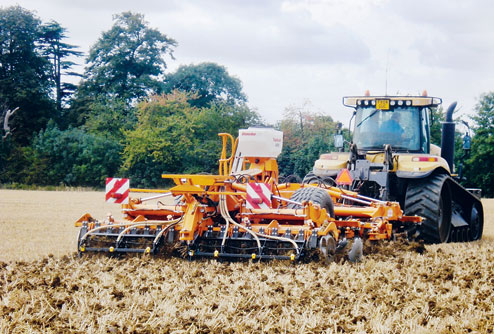
Stocks Turbo Jet can respond to GPS rate maps.
For precision-farming applications, the only additional items needed are a GPS receiver and a treatment map on an SD card, which is loaded using the integral card reader/writer on the PS8000i. Alternatively, the PS8000i can receive rate messages from a third-party controller, such as John Deere Greenstar or SOYL Opti and others.
RDS has also recently developed a PS8000i controller enabling variable-rate broadcasting of oilseed rape (as well as slug pellets and fertiliser) for the Stocks Turbo Jet applicator.
Growers using Turbo Jet applicators with radar-speed-related electric drive can alter rates manually, points out Rick Parker of Stocks AG. But this development offers a more sophisticated approach with automated rate adjustment.
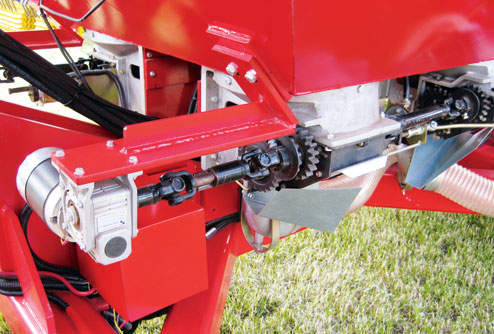
Seed drills with mechanical drive to an Accord-type metering system can be converted to electric drive for variable-rate sowing using an Artemis controller kit supplied by RDS Technology.
The variable rate plan is transferred from a computer to the RDS MAC8000 controller by SD card, which can then be used to upload data logged during the sowing operation to farm records.
Upgrading an existing Turbo Jet broadcaster running the Wizard controller costs £1,612; a new Precision VR applicator is £5,950, and comes complete with a MAC8000 controller that can be used to operate a second Stocks applicator on the same implement.
Techneat’s Intelli-Rate controller has been upgraded to also handle variable-rate broadcasting of rapeseed from subsoilers and cultivators.
“It will link with a wide range of precision farming information sources providing variable seed rate data,” notes Techneat’s Tom Neat. “Also, it’s compatible with all Techneat seeder metering units, including the TerraCast V2.
It is priced at £500 when supplied with a new broadcaster or £550 to retrofit as a “plug-and-play” unit to an existing unit.
Mr Neat emphasises that as well as being capable of handling very low seed rates, the TerraCast’s metering unit adjusts in increments of just 0.1kg/ha to fully exploit the potential of precision variable seed rates.

